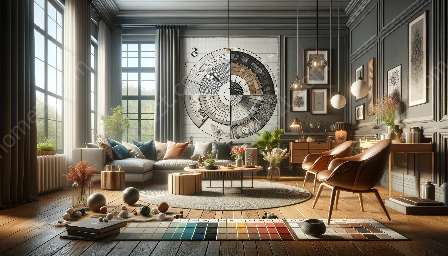In the world of interior design, cultural influences play a significant role in shaping the aesthetics and functionality of living spaces. From traditional motifs to modern interpretations, cultural elements have a profound impact on how people design and decorate their homes. This article aims to explore the diverse ways in which various cultures influence interior design and homemaking, providing insights into how these influences can be integrated to create harmonious and captivating living environments.
Understanding Cultural Influences
Design, in its essence, is a reflection of the society and culture in which it is created. Cultural influences encompass a wide range of elements, including art, history, architecture, traditions, and lifestyle. These influences often manifest themselves in the form of color schemes, patterns, textures, materials, furniture styles, and spatial arrangements.
Traditional Motifs and Symbolism
Many cultures have distinct traditional motifs and symbols that hold deep cultural and spiritual significance. These motifs often find their way into interior design, serving as a connection to heritage and tradition. For example, the use of intricate mandala designs in Indian-inspired interiors or the incorporation of geometric patterns in Moroccan decor reflects the cultural roots of these design styles.
Regional Architecture and Design Principles
Architecture and design principles vary across different cultures and geographical regions. The layout of a traditional Japanese house, with its sliding doors and open floor plans, is a stark contrast to the compartmentalized rooms of a European-style home. These architectural differences influence interior design choices, impacting the use of space, natural lighting, and room functionality.
Color Palettes and Textiles
Cultural influences also shape the color palettes and textiles used in interior design. Whether it's the vibrant hues of South American textiles or the earthy tones of Scandinavian design, each culture has its own unique color preferences and textile traditions. These elements add depth and richness to interior decor, allowing homeowners to infuse their spaces with cultural warmth and character.
Impact of Globalization
In today's interconnected world, globalization has led to a fusion of cultures, resulting in a myriad of design possibilities. The blending of diverse cultural elements has given rise to eclectic and multicultural interior design styles, where influences from different parts of the world coexist harmoniously. This phenomenon has opened up new avenues for creativity, enabling individuals to express their cultural heritage in contemporary and innovative ways.
Embracing Cultural Diversity in Design
As the world becomes increasingly interconnected, embracing cultural diversity in design has become a prevailing trend. Homeowners and designers are actively seeking ways to incorporate cultural influences into their interior decor, whether through handmade crafts, artistic expressions, or curated pieces from around the globe. This inclusive approach not only adds authenticity to the design but also fosters a sense of global awareness and appreciation.
Conclusion
From the intricate patterns of Islamic art to the minimalistic elegance of Scandinavian design, cultural influences continue to shape the landscape of interior design and homemaking. Understanding and celebrating these influences allows us to create living spaces that resonate with history, tradition, and individuality. By acknowledging the impact of cultural diversity, we can enrich our homes with a tapestry of experiences and narratives, making each room a reflection of the global mosaic that defines our world today.








